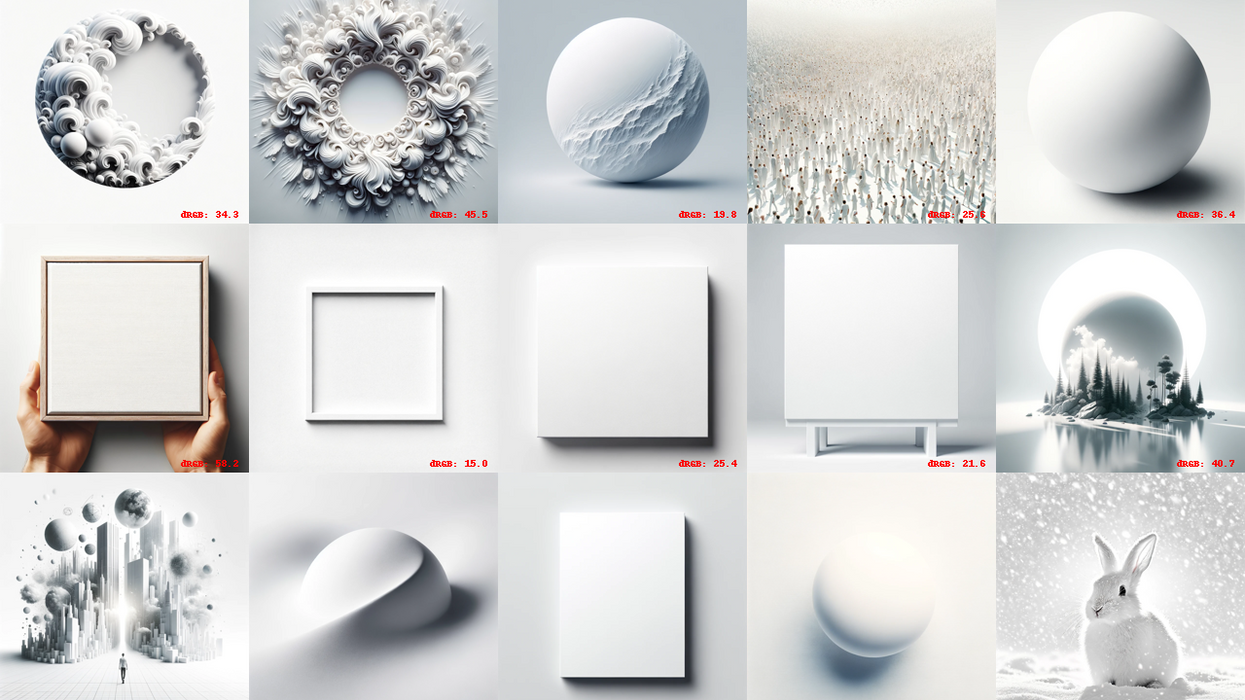Why Can’t AI Generate a Simple White Background Image?
According to reports, generative AI models like Runway and DALL-E are struggling with this very simple task.

AI attempts at creating a blank white image
In what sounds like a plot point that you might find in a Philip K. Dick book, apparently many of the most popular generative AI models are struggling to perform this very simple task. According to data scientist Cody Nash in a thorough Github post that explores this phenomenon, it might be more than just an odd oversight from these generative AI models.
So what’s going on here? And, for those already exploring AI for video and other types of creative projects, how might this affect these models’ ability to perform some basic requests that are actually quite integral to so many forms of content creation?
Let’s explore more below…
Nash begins his paper by talking about how not only easy it is—in theory—to create a colorless, white “painting” or piece of content, but it’s also a very important and powerful part of the history of art itself.
“A perfectly smooth, featureless expanse of light. Colorless and all colors at the same time. A white canvas in a white frame in a white room lit by white light. Nothing, not darkness, not even absence. Perhaps, by necessity, your awareness focused on this idea, but only as a gateway into the space where the most subtle, ancient, and remote details would loom large if they were there at all.”
And, poetically perhaps, a white canvas is very much thought of as the starting point for all human art and expression. So it should be something that AI could handle, and use in the same way, as well, right?
“So maybe this is a test? The long path of civilization has passed through a point where human genius had a thought that spurred art into existence that was a solid white canvas. Not that white canvases had never existed before, but some now were created as a result of ideas to be expressed. It was not a background to be painted over, but the foreground, the focus, the result. Now, can AI do that?”
But, as we’ll see below, this is anything but an easy task for AI currently.

White Panel II, 1985 by Ellsworth Kelly, Image Credit: High Museum of Art
AI Attempts to Create a Blank White Space
In a series of examples, Nash shares the results from some of the most basic prompts that he gives to generative AI models to create what would basically amount to a white background image. Here are some of his prompt inputs:
- “A blank white space”
- “An image of pure #FFFFFF pixels”
- “#FFFFFF”
- “A white wall”
- “An image that is nothing but the color white”
And here are some of the, very much not that, results:

Are There Limits to AI?
From there, Nash goes much deeper into the woods here as he tries many different prompts and exercises to try to train these AI models to give him what he wants, which is ultimately nothing—or at least a rendering of nothing that he could, in theory, use to create something either himself or with AI too.
To be fair to the main AI competitors on the market right now, Nash tries his hand at several different models including Runway, DALL-E 3, SDXL, and others to see if they can assist him on his journey, but none seem to be able to perform this simple task.
If you’re interested in exploring this deeper yourself, I highly recommend reading this whole article from Nash on his GitHub page. But to sum up his findings, Nash shares that “the goal was to see if AI could create a white painting. Not just a pure white image, but something that is the result of some inspiration, idea, or concept.”
And ultimately he found that there's “still room for improvement.”















